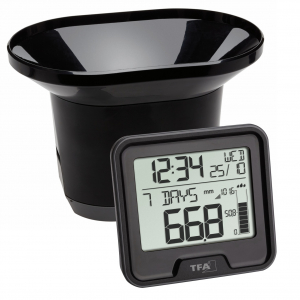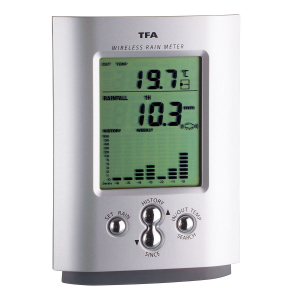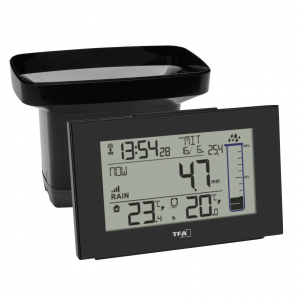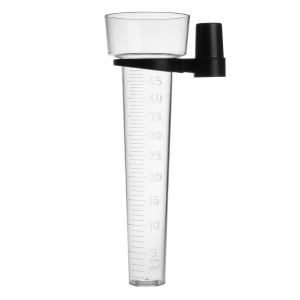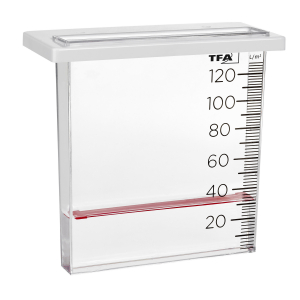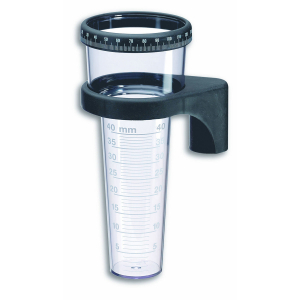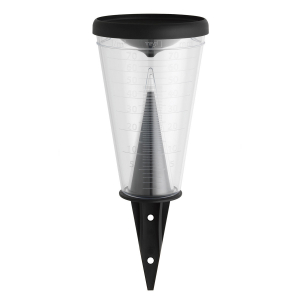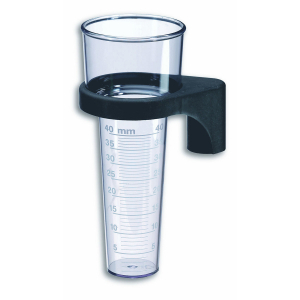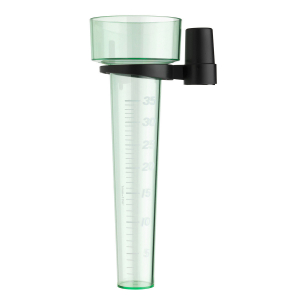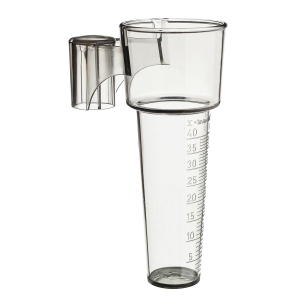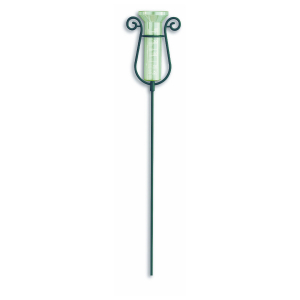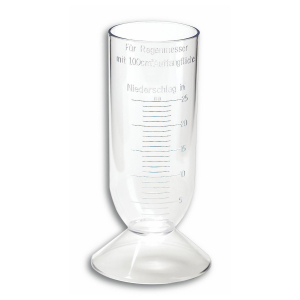Rain gauges can very simply answer the question “How much did it really rain today?” Rain gauges or precipitation gauges collect rain in a collection container that is usually cylindrical. Based on the water level, it is then possible to determine exactly how much precipitation there was in a certain period at the place of installation. In addition to rain, solid precipitation, such as snow or hail, is also taken into account if it has melted.
With a rain gauge, you can keep an eye on the precipitation right where you are and find answers to important questions about your home and garden. Do I need to water my plants in the garden? Has there been heavy rain? How much did it rain at home while I was on holiday? We explain which rain gauge is the best one for you in our guide. Our online retailer list will tell you where you can buy rain gauges from TFA Dostmann.
All rain gauges sorted by category
Here, you will find a large selection of rain gauges directly from the manufacturer:
Digital rain gauges
Analogue rain gauges
All products of Rain-gauges
Which rain gauges are the best?
Our guide should make your purchase decision easier and help you find the best rain gauge for you.
Because it’s not only the price that’s important when making your choice. This page will therefore provide you with the most important information worthy of your attention if you want to buy a rain gauge.
Finally, you will find answers to frequently asked questions in our guide so that you can use your rain gauge in the best possible way.
What do you measure with a rain gauge?
A rain gauge has the task of measuring precipitation. When precipitation falls, the water is collected in a receptacle and a scale or digital mechanism is used to determine the amount of rain.
A rain gauge or precipitation gauge measures the amount of precipitation that has fallen per square metre (1 m2 or 10,000 cm2). In addition to rain, solid precipitation, such as snow or hail, is also taken into account when measuring, once it has melted into a water equivalent.
What rain gauges are there?
There are different ways to measure the amount of precipitation. Depending on your application and interest, you can use analogue or digital rain gauges. Digital rain gauges can also be integrated into a weather station.
In summary, there are three categories of rain gauges:
- Analogue rain gauges
- Digital rain gauges
- Integrated rain gauges (e.g. in a weather station)
Analogue rain gauges
An analogue rain gauge catches raindrops in a container. Its measuring cup is equipped with a scale on which you can read off the amount of rain that has fallen in mm. One millimetre of rain corresponds to one litre of rain per square metre. The measuring cylinders of analogue rain gauges have to be emptied regularly so that you can measure daily or weekly rainfall amounts, for example.
Weatherproof precipitation gauges made of plastic or stainless steel, which are inserted into the soil in the garden as garden plugs with a rod or ground spike, are particularly popular. Furthermore, some precipitation gauges have evaporation protection: a funnel-shaped lid on the collection container protects against evaporation and enables more precise precipitation values. Analogue rain gauges are available to suit every taste in modern and traditional designs and appearance.
Digital rain gauges
A digital rain gauge measures the amount of water via a tipping bucket. As soon as a pan of the scale is filled with a certain amount of precipitation, it tilts down. The digital precipitation gauge measures the amount of rain that has fallen based on the number of times the scale empties.
Automatic emptying allows precipitation to be measured over a longer period of time and retrieved on an hourly, daily, weekly or monthly basis.
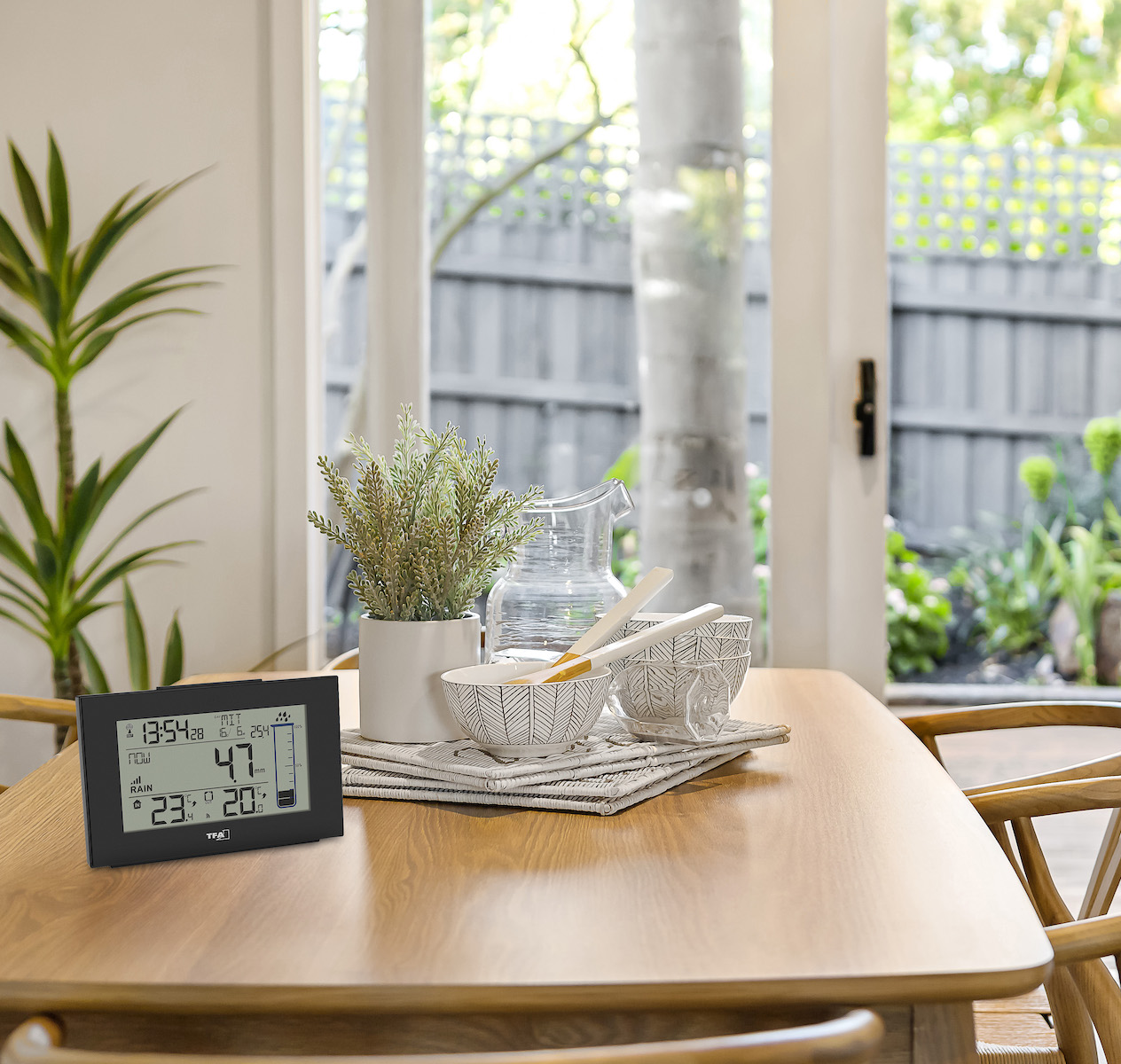
Base station: Follow all rain gauge values conveniently from your living room.
Digital precipitation gauges usually use radio technology. With these radio-controlled rain gauges, the precipitation amounts can be read from the comfort of your couch on the station or your smartphone.
Integrated rain gauge
If you like to make extensive weather observations and weather recordings, a rain gauge in combination with a weather station or a WeatherHub Smarthome Set is the right choice. Other wireless sensors, such as temperature transmitters, anemometers and thermo-hygro transmitters, can record additional weather data and transmit the measured values wirelessly from the outdoor sensor to a base station or an app.
The amount of rain can then be read and interpreted in conjunction with other information about the weather, such as temperature, humidity or wind strength.
Rain gauges compared
What are the advantages and disadvantages of the individual precipitation gauges?
| Analogue Rain Gauges | Digital Rain Gauges | Integrated Rain Gauges | |
|---|---|---|---|
| Advantages |
|
|
|
| Disadvantages |
|
|
|
Practical tips for rain gauges
Before you buy a rain gauge, read our valuable rain gauge tips and information below.
How to use a rain gauge
In general, rain gauges are very easy to use. But, even here, mistakes can happen during use that falsify your readings.
First of all, the measuring cylinders of analogue rain gauges must be emptied regularly to determine the daily amount of rain. If you want to know the total amount of precipitation over a longer period of time, the values must be noted regularly. An exception is the analogue rain gauge with memory function, where the precipitation values can be recorded via a setting ring.
Here, self-emptying wireless digital rain gauges have a significant advantage. The rainfall amounts can be displayed graphically or as cumulative numerical values on a measuring device or app in self-selectable time periods. In this way, you can quickly and easily survey the rainfall of the last few hours, days or even weeks and months.
Where can I buy a rain gauge?
Our list of online retailers shows you where you can buy rain gauges from TFA Dostmann. Our first-class support will be happy to provide you with advice on any of our rain gauges.
Where should I place a rain gauge?
One of the most important aspects of measuring precipitation is the location of the rain gauge to avoid inaccurate or falsified results. When looking for the optimal location, you should consider a few criteria:
The precipitation gauge should not have any tall buildings, canopies or trees in the near vicinity. The German Meteorological Service recommends that the distance to an obstacle should be at least twice as large as the height of the obstacle.
Another factor you should definitely consider is the wind in your region. For example, the rain gauge must not be placed in the lee of buildings or trees. Otherwise, the amount of rain determined will be too low.
However, a rain gauge should not be placed in a completely open, unprotected spot in the garden either. In strong winds, the water could otherwise be blown over the catchment. To avoid high wind speeds near the ground, a place with low wind protection (not higher than the rain gauge!) is ideal, e.g. a place with small bushes or a low planted bed.
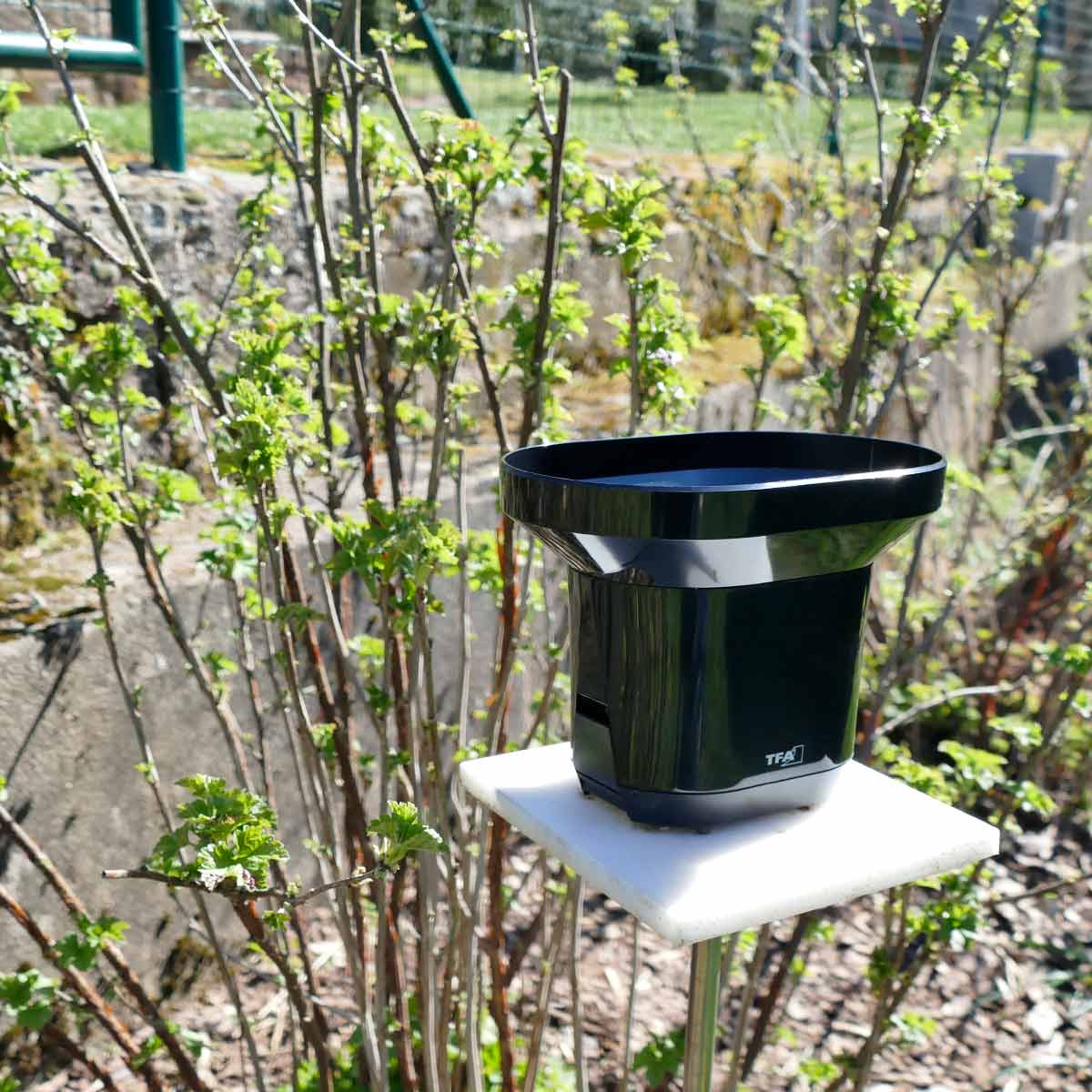
Set up the rain gauge correctly in your garden.
Mount the precipitation gauge horizontally at a height of approx. 1 m from the ground on a suitable support, e.g. a ground spike, stem or wooden stick. Make sure that the precipitation gauge is well secured for stormy weather.
Grass or gravel is suitable as a base; concrete is out of the question because of the risk of splashing. If you have a garden available, it will certainly be easier for you to find a suitable place for the rain gauge. A terrace, balcony or flat roof is less suitable for setting up a rain gauge, as the necessary distance to the building cannot be maintained.
When setting up a wireless rain gauge, the distance to the base station is of course an essential factor. Make sure you have a good radio connection so that the radio transmitter can send the information about the amount of rain smoothly to the station in your house.
Since dirt can influence the measurement result, regular cleaning of the meter is recommended. It is important to protect the rocker from blocking debris and to clean it regularly, especially with self-emptying digital rain gauges.
Frequently asked questions about rain gauges
You can find answers to frequently asked questions about rain gauges here:
How does a rain gauge work?
In the event of precipitation, water is collected in the horizontal collecting surface of the rain gauge. A scale or digital mechanism is used to determine the precipitation.
What do you need a rain gauge for?
A rain gauge has the task of measuring the precipitation that has fallen in a certain time interval. Snowfall and hail are usually also recorded.
Rain gauges in the garden are helpful and practical. They reveal at a glance how much rain the last shower actually brought and whether that is enough to keep plants in the garden healthy for the rest of the week. Your lawn needs sufficient watering, especially in summer. Otherwise, it will burn.
How much precipitation is 1 mm in litres?
Precipitation that has fallen is expressed in the unit of measurement of millimetres (mm). A precipitation height of 1 mm corresponds to the amount of precipitation of 1 l/m². Thus, the precipitation height of, for example, 25 mm corresponds to a precipitation quantity of 25 l/m².
What amount of rain is a lot?
The German Meteorological Service warns of heavy rain in three levels. Rainfall amounts of 15 to 25 l/m² in 1 hour or 20 to 35 l/m² in 6 hours are considered a significant weather warning. Rainfall amounts of 25 to 40 l/m² in 1 hour or over 35 to 60 l/m² in 6 hours are considered severe weather warnings. Rainfall amounts above 40 l/m² in 1 hour or above 60 l/m² in 6 hours are considered a warning of extreme weather events.
Which rain gauge is frost-proof?
With regard to temperature, a working range of -30 to +60°C is theoretically permissible for the analogue rain gauges from TFA. These analogue rain gauges are made of stable SAN or ABS plastic and could theoretically remain outdoors even in winter and frost.
However, no reliable measurement can be taken where there is frost or frozen precipitation. This means that the rain gauge cannot be used properly in frosty conditions. We therefore recommend taking the precipitation gauge out of operation over the winter and sparing it the stress of the weather.
